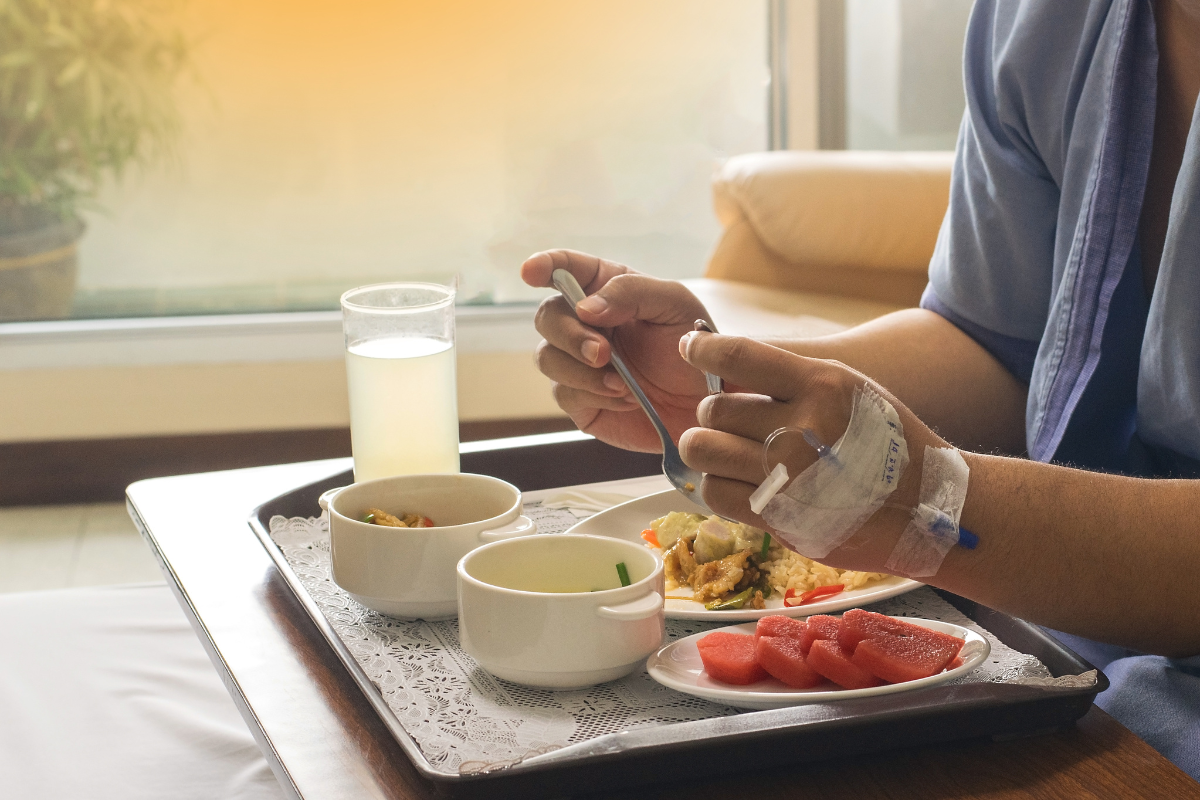
How NYC Hospitals Successfully Made Plant-Based The Default
Earlier this year New York City’s 11 public hospitals started serving plant-based meals as the main dining option for in-patients. It is a momentous achievement. NYC Hospitals + Health is the biggest public healthcare system in the US, serving three million meals a year. It expects to serve at least 850,000 plant-based meals in 2023. The programme will likely now be extended to the region’s five post-acute facilities. As a result of the initiative. This historic achievement was the topic of a recent Plant Based World Pulse’s Insider Talks panel discussion.
The shift was made gradually to ensure that the move had the highest chance of acceptance and success. In 2019 hospital food provider Sodexo began offering Meatless Monday. Then in March 2022, they piloted plant-based lunches by default, extending to plant-based dinners in September 2022.
Samantha Morgenstern is a dietician and Senior Director of Nutrition Services for Acute Care at Sodexo. She explained how the policy was introduced:
“It started back in January 2019 when Brooklyn Borough President Eric Adams who is now Mayor of New York started speaking publicly about his own journey with his food choices and how he put his own diabetes into remission. The message was really inspiring. We felt it was a great opportunity for us to partner with him. So we started Meatless Monday for lunch across our 11 facilities. After there was no uproar from patients, nurses or doctors, we added dinner. Slowly over time, we introduced the concept to our patients. We were very careful about the dishes we chose. The first dish we served for Meatless Monday was Bolognese – something that people are familiar with. Ultimately, our goal is to make sure patients consume enough calories and nutrients. So we were very strategic and thoughtful about the choice of meals.”
The change was supported by Greener By Default, an NGO that helps organisations adopt plant-based food by making it the default choice. Their founder and CEO Katie Cantrell explained how schools, universities, businesses, restaurants and hospitals are encouraged to offer more plant-based options: “We apply behavioural science to food policy. Research shows that our behaviour is largely shaped by our environment. So the dish we see first on a menu, the way it is presented and what it is called influences our choice without us even realising it. Rather than lecturing people or giving them statistics we make more sustainable, healthier choices, the easiest choices for them to make. In most places, meat is the default choice. Most people stick with the default because it’s easier and because we assume that if most people do it, it must be the right thing to do. Our goal is to flip the norm to make plant-based the default but give people the choice to opt into meat and dairy if they want to. That freedom of choice is critical because people don’t like having options removed or having a choice forced on them. That can generate a backlash. We found that when menus are entirely vegetarian or vegan, about 10 to 20% of people want meat and get upset if that option is not available. So having plant-based as the default, but allowing people to opt-in to meat means everyone has their needs met. Studies have shown that most people are happy to stick with plant-based when it is the normal easy choice. And of course, when it tastes good. One thing we advise is renaming dishes to avoid the word vegetarian, as some people will think a vegetarian dish is not for them. When a tech company renamed their vegetarian hummus wrap as a roasted red pepper, avocado hummus wrap sales went up. So we bring in research to make it as easy as possible to implement the strategy.”
The key metric was uptake. The team found that 50-60% of patients were sticking with the plant-based default option. 95% of patients who chose a plant-based meal were happy with it.
There are several factors that helped the programme succeed. The menu choices were delivered verbally by trained staff rather than on paper or online. Employees spoke to patients and described the dishes and ingredients. The plant-based choice was called the chef’s recommendation. The words default, vegan and vegetarian were not used at all. Instead, the meals were given catchy titles.
There was extensive staff engagement prior to the launch, including a road show to all 11 sites with separate Q and A sessions for doctors and nurses. The team wheeled a food cart with a colourful logo around departments so that both leaders and frontline staff could try the food and ask questions.
Samantha Morgenstern adds: “It was important to have physicians on board at each of our sites to make sure that they could speak with colleagues and share research. And from the get-go, we told people it’s not all or nothing. It is the chef’s recommendation, but ultimately, our patients have a choice. We just wanted to make sure that we’re giving them every opportunity to make a healthier choice.”
Katie Cantrell says she is delighted by the success of the project: “There weren’t as many challenges as we were expecting. Logistically a lot goes into it. Between the Mayor’s office, Sodexo and NYC Hospitals + Health, everyone put in so much effort into including everyone, so it’s not a top-down initiative that people feel is being forced on them. It’s so important to have the buy-in of the people who interface with the diners. They need to genuinely recommend the food. Because people pick up if the person serving it is skeptical. This is really, truly a historic win. As far as we know it is unprecedented for a healthcare facility to implement plant-based default, let alone the biggest hospital system in the United States. We’re now trying to build on this progress and make sure that this amazing example is taken up by other healthcare systems.”


